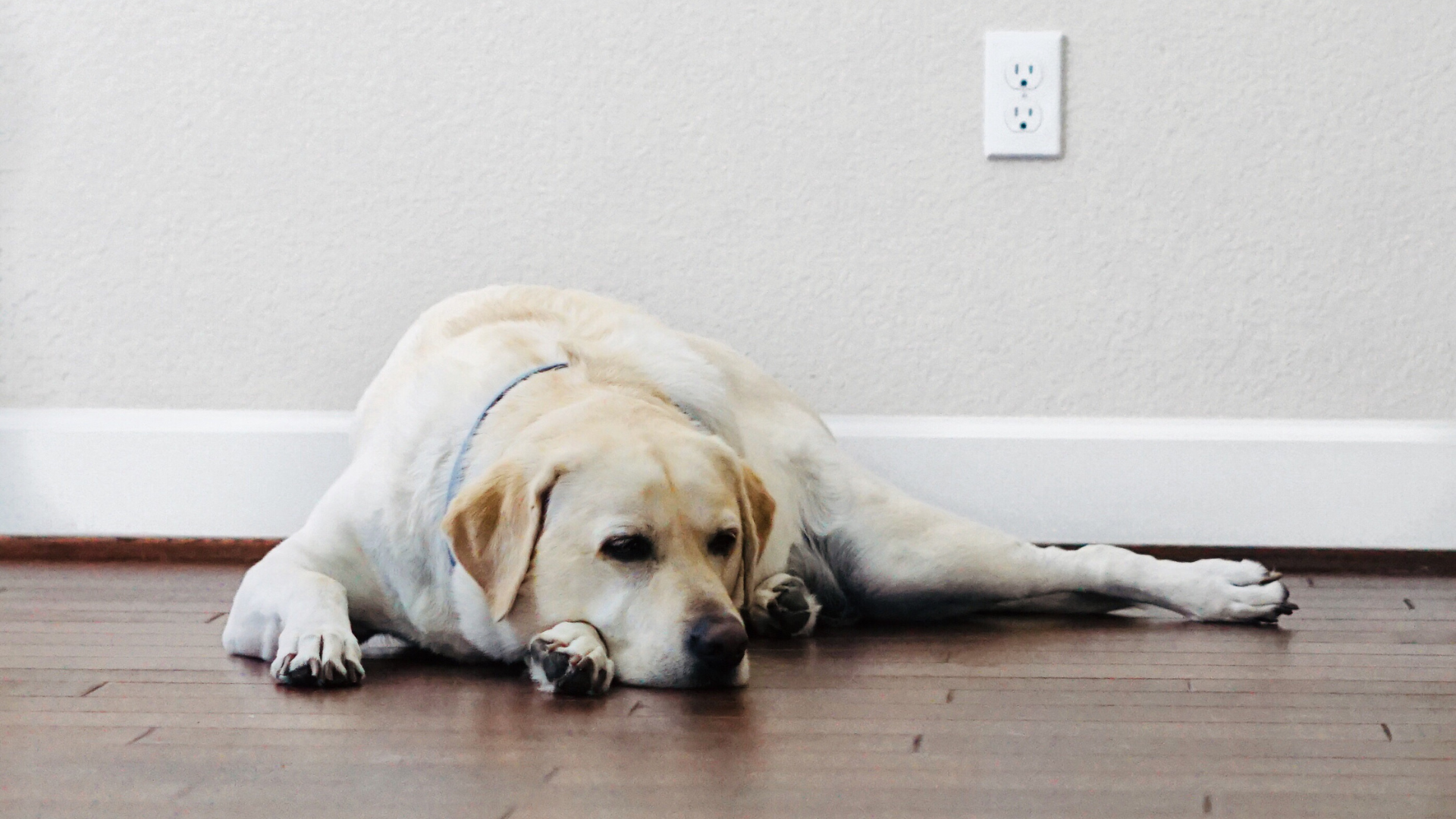Many dog owners have experienced their furry friend acting disoriented, unbalanced, and confused. My Dog is Disoriented, Unbalanced, and Confused These symptoms can be concerning and may indicate an underlying health issue. Dog owners need to understand them.

Disorientation in dogs can manifest in a variety of ways, such as walking in circles, difficulty standing up or bumping into objects. Unbalanced behavior may include stumbling, falling over, or swaying while standing still. Confusion can be exhibited through changes in behavior, such as decreased responsiveness to commands or increased anxiety. These symptoms can be caused by a range of issues, including neurological disorders, ear infections, or medication side effects.
Understanding Canine Disorientation
Disorientation is a common problem in dogs and can be caused by a variety of factors. Pet owners need to recognize the symptoms of disorientation, as well as the possible causes, to provide appropriate care for their furry friends.
Common Symptoms of Disorientation
Dogs that are disoriented may exhibit a range of symptoms, including:
- Unsteadiness or loss of balance
- Confusion or disorientation
- Stumbling or falling
- Head tilt
- Circling or pacing
- Loss of appetite
- Vomiting or diarrhea
These symptoms can be indicative of several underlying conditions, and it is important to seek veterinary care if they persist or worsen over time.
Possible Causes of Unbalance and Confusion
There are many possible causes of disorientation in dogs, including:
- Inner ear infections or other vestibular system disorders
- Brain tumors or other neurological conditions
- Toxicity from medications or other substances
- Hypothyroidism or other metabolic disorders
- Cognitive dysfunction syndrome (CDS) in older dogs
In some cases, disorientation may be a normal part of the aging process in senior dogs. However, it is important to rule out other underlying conditions that may be causing the symptoms.

Overall, it is important for pet owners to be aware of the symptoms and possible causes of disorientation in dogs, and to seek veterinary care if necessary. With proper diagnosis and treatment, many dogs can recover from this condition and go on to live happy, healthy lives.
Medical Evaluation and Diagnosis
The Role of a Veterinarian
When a dog is disoriented, unbalanced, and confused, it is crucial to seek the expertise of a veterinarian. The veterinarian will conduct a thorough physical examination of the dog to assess its overall health and identify any abnormalities. The veterinarian will also ask detailed questions regarding the dog's medical history, diet, and lifestyle to help determine the underlying cause of the symptoms.
Diagnostic Tests
To diagnose the cause of the dog's disorientation, unbalance, and confusion, the veterinarian may recommend various diagnostic tests. These tests may include blood work, urinalysis, and imaging tests such as X-rays, CT scans, or MRI scans. These tests can help identify any underlying medical conditions that may be causing the dog's symptoms.
Interpreting Clinical Signs
Interpreting clinical signs is an essential part of diagnosing a dog's medical condition. In the case of disorientation, unbalance, and confusion, the veterinarian will look for signs of neurological dysfunction, such as abnormal reflexes, weakness, or tremors. They will also check the dog's blood pressure and heart rate to rule out any cardiovascular problems.

In conclusion, a veterinarian's role is crucial in diagnosing the cause of a dog's disorientation, unbalance, and confusion. They will conduct a thorough physical examination, recommend diagnostic tests, and interpret clinical signs to identify the underlying medical condition. It is essential to seek veterinary care promptly to ensure the best possible outcome for the dog's health.
Specific Conditions Affecting Balance
When a dog experiences disorientation, unbalance, and confusion, it is often a sign of a problem affecting their balance. Several conditions can cause balance issues in dogs, including vestibular disease, ear infections and inflammation, and neurological disorders and tumors.
Vestibular Disease in Dogs
Vestibular disease is a condition that affects a dog's inner ear and can cause severe balance issues. There are two types of vestibular disease: peripheral vestibular disease and central vestibular disease. Peripheral vestibular disease affects the inner ear, while central vestibular disease affects the brainstem.
Symptoms of vestibular disease include nystagmus (involuntary eye movements), head tilt, and loss of balance. In some cases, the exact cause of vestibular disease is unknown, and it is referred to as idiopathic vestibular syndrome.
Ear Infections and Inflammation
Ear infections and inflammation can also cause balance issues in dogs. Infections can occur in the outer, middle, or inner ear, and can be caused by bacteria, yeast, or other microorganisms.
Symptoms of ear infections and inflammation include head shaking, scratching at the ears, discharge from the ears, and a strong odor coming from the ears. If left untreated, ear infections and inflammation can lead to permanent damage to the ear and balance issues.

Neurological Disorders and Tumors
Neurological disorders and tumors can also cause balance issues in dogs. These conditions can affect the brain or spinal cord and can cause a wide range of symptoms, including loss of balance, weakness, and seizures.
Tumors can be either benign or malignant and can grow in various parts of the body, including the brain and spinal cord. Treatment for neurological disorders and tumors will depend on the specific condition and may include surgery, medication, or other therapies.
In conclusion, several conditions can cause balance issues in dogs, including vestibular disease, ear infections and inflammation, and neurological disorders and tumors. It is essential to seek veterinary care if a dog is experiencing any of these symptoms to determine the underlying cause and receive proper treatment.
Treatment Options
When a dog is disoriented, unbalanced, and confused, prompt treatment is necessary to prevent further complications. There are several treatment options available, and the choice of treatment depends on the underlying cause of the symptoms. In this section, we will explore some of the treatment options available.
Medications and Antibiotics
If the symptoms are caused by an infection or inflammation, antibiotics or anti-inflammatory medications may be prescribed. These medications can help reduce inflammation and control the infection, which can alleviate the symptoms. However, it is essential to note that antibiotics should only be prescribed by a licensed veterinarian and used as directed.
Surgery and Advanced Treatments
In some cases, surgery may be necessary to correct the underlying cause of the symptoms. For example, if the dog has a brain tumor, surgery may be required to remove the tumor. Additionally, advanced treatments such as radiation therapy or chemotherapy may be necessary to treat cancer or other conditions.
Supportive Care and Rehabilitation
Supportive care and rehabilitation are essential for dogs experiencing disorientation, unbalance, and confusion. These treatments can help the dog recover and regain their strength and mobility. Supportive care may include hospitalization, fluid therapy, and pain management. Physical therapy can also be beneficial in helping the dog regain their balance and coordination.
In conclusion, treatment options for disorientation, unbalance, and confusion in dogs depend on the underlying cause of the symptoms. Medications and antibiotics, surgery and advanced treatments, and supportive care and rehabilitation are all viable options. It is essential to consult with a licensed veterinarian to determine the best course of treatment for your dog.
Managing a Disoriented Dog at Home
Home Care Strategies
When a dog is disoriented, unbalanced, and confused, it can be a difficult time for both the animal and the owner. However, some simple home care strategies can be put in place to help manage the situation. Firstly, it is important to ensure that the dog has a safe and comfortable place to rest. This could be a crate, a bed, or a quiet corner of the room. The dog should be able to move around freely but also have a sense of security.

Another important aspect of home care is to provide regular meals and plenty of fresh water. The dog may not be interested in food at first, but it is important to encourage them to eat small amounts throughout the day. Providing a quiet and calm environment can also be beneficial, as loud noises or sudden movements can exacerbate the dog's confusion.
Monitoring and Ongoing Support
It is important to monitor the dog's condition closely and seek veterinary advice if necessary. The vet may recommend medication to help manage the dog's symptoms or suggest a rehabilitation program to aid in their recovery. It is also important to provide ongoing support to the dog during this time, both physically and emotionally.
Regular walks can be beneficial, but it is important to keep the dog on a leash and provide support if they are unsteady on their feet. Gentle exercise, such as stretching or swimming, can also be helpful. It is important to keep the dog's environment as consistent as possible and to avoid any sudden changes that could cause further confusion.
In conclusion, managing a disoriented dog at home requires patience, understanding, and a commitment to providing the best possible care. By following these home care strategies and seeking veterinary advice when necessary, it is possible to support the dog's recovery and ensure their ongoing well-being.

Prognosis and Long-Term Management
Understanding Prognosis
The prognosis for a dog with vestibular disease or syndrome can vary greatly depending on the underlying cause and severity of the condition. In some cases, the symptoms may resolve on their own within a few days to a few weeks. In other cases, the symptoms may be more severe and require more intensive treatment and management.
It is important to note that while some dogs may fully recover from vestibular issues, others may continue to experience some degree of imbalance, disorientation, or other symptoms for the rest of their lives. However, with appropriate management and care, many dogs can lead happy and fulfilling lives despite their condition.
Life with a Dog with Vestibular Issues
For dogs with vestibular issues, it is important to provide a safe and supportive environment that can help them manage their symptoms and maintain their quality of life. This may involve making changes to the dog's living space to reduce the risk of falls or injuries, such as adding non-slip mats or rugs to slippery floors or providing additional support when going up and down stairs.
In addition, it may be helpful to provide the dog with a consistent routine and familiar surroundings, as changes in their environment or routine can exacerbate their symptoms. Regular exercise and mental stimulation can also be beneficial, as long as it is done in a safe and controlled manner.

Depending on the severity of the dog's symptoms, medications or other treatments may also be necessary to manage their condition. This may include medications to reduce inflammation or manage nausea, as well as physical therapy or other forms of rehabilitation to help the dog regain their balance and coordination.
Overall, while living with a dog with vestibular issues can present some challenges, with appropriate management and care, many dogs can lead happy and fulfilling lives. By working closely with a veterinarian and providing a supportive environment, owners can help their dogs manage their symptoms and enjoy a good quality of life.
Conclusion:
In conclusion, observing signs of disorientation, imbalance, and confusion in your dog can be concerning. These symptoms may indicate various underlying health issues, such as vestibular disease, neurological problems, or even toxicity. Dog owners need to remain vigilant and seek veterinary attention promptly if they notice these signs in their pets. A thorough examination by a veterinarian can help diagnose the underlying cause and initiate appropriate treatment.
Additionally, providing a calm and supportive environment for your dog during this time can help alleviate their distress. Remember to follow your veterinarian's guidance and administer any prescribed medications or therapies as directed. With proper care and attention, many dogs can recover from episodes of disorientation and imbalance and return to their usual selves.
My Dog is Disoriented, Unbalanced, and Confused By recognizing these symptoms early and taking proactive steps, you can ensure the best possible outcome for your canine companion's health and well-being.
Frequently Asked Questions (FAQs)
- What are the common causes of disorientation and loss of balance in dogs?
- There are several common causes of disorientation and loss of balance in dogs, including inner ear infections, vestibular disease, brain tumors, and strokes. Other possible causes include poisoning, head injuries, and certain medications.
- How can I identify if my dog has had a stroke?
- Some of the signs that your dog may have had a stroke include sudden weakness or paralysis, loss of balance, head tilt, and difficulty standing or walking. Other possible symptoms include confusion, disorientation, and seizures. If you suspect that your dog has had a stroke, it is important to seek veterinary care immediately.
- What should I do if my dog suddenly starts acting confused and scared?
- If your dog suddenly starts acting confused and scared, it is important to stay calm and try to comfort him. You should also try to identify any potential triggers or causes of his behavior, such as loud noises or sudden changes in routine. If your dog's behavior persists or worsens, you should contact your veterinarian for further evaluation.
- Are there specific treatments for dogs experiencing sudden unsteadiness and disorientation?
- The specific treatment for dogs experiencing sudden unsteadiness and disorientation will depend on the underlying cause of their symptoms. In some cases, medication may be prescribed to help manage symptoms and improve balance. Other treatments may include physical therapy, surgery, or changes to your dog's diet or environment.
- What symptoms might indicate that a dog is disoriented and in need of veterinary care?
- Some of the symptoms that may indicate that a dog is disoriented and in need of veterinary care include stumbling or falling, loss of balance, head tilt, and difficulty standing or walking. Other possible symptoms include confusion, disorientation, and seizures. If you notice any of these symptoms in your dog, you should seek veterinary care immediately.
- Why might a dog begin to walk sideways and have difficulty standing upright?
- A dog may begin to walk sideways and have difficulty standing upright for a variety of reasons, including inner ear infections, vestibular disease, brain tumors, and strokes. Other possible causes include poisoning, head injuries, and certain medications. If you notice these symptoms in your dog, it is important to seek veterinary care to determine the underlying cause and develop an appropriate treatment plan.




